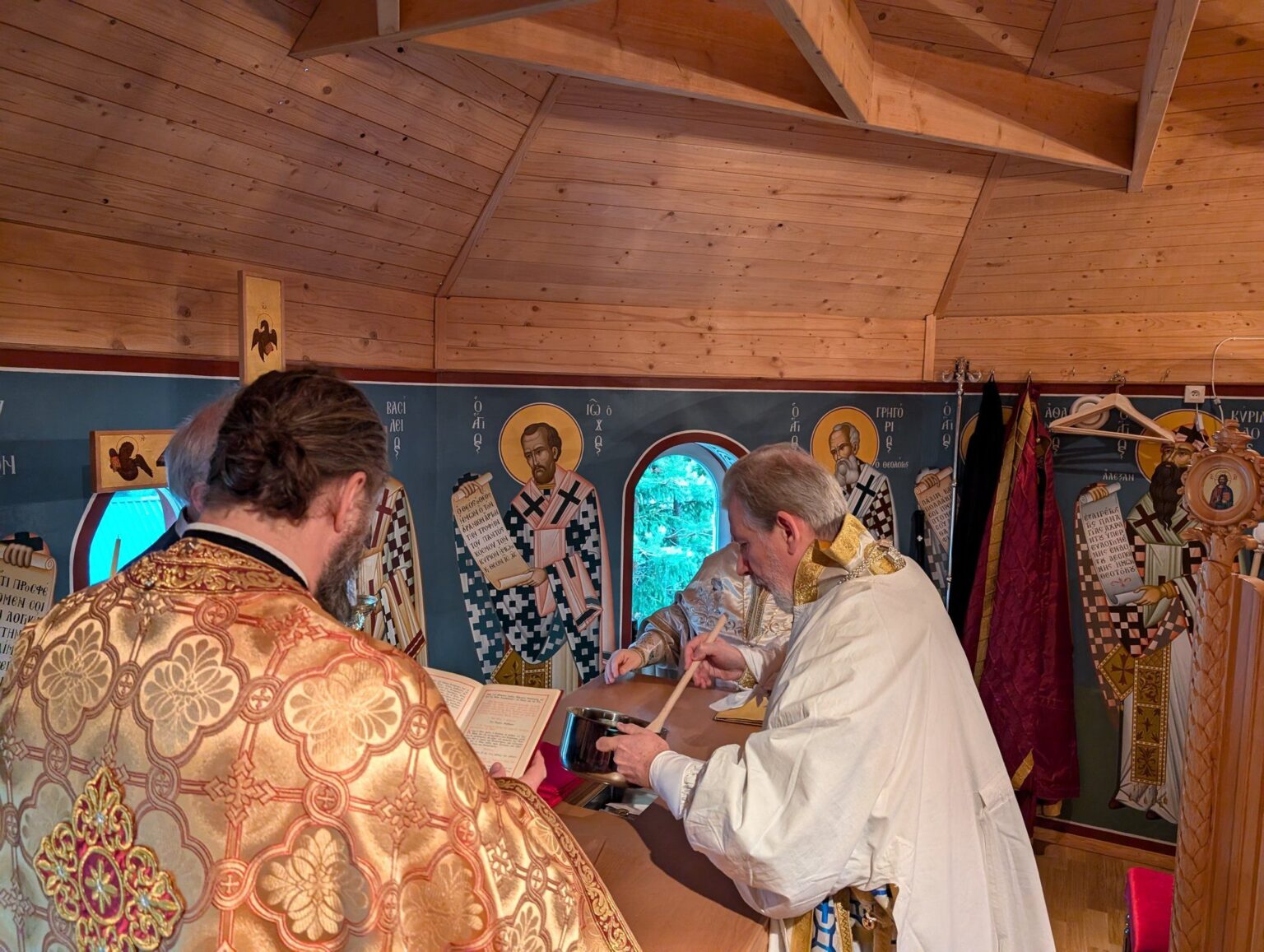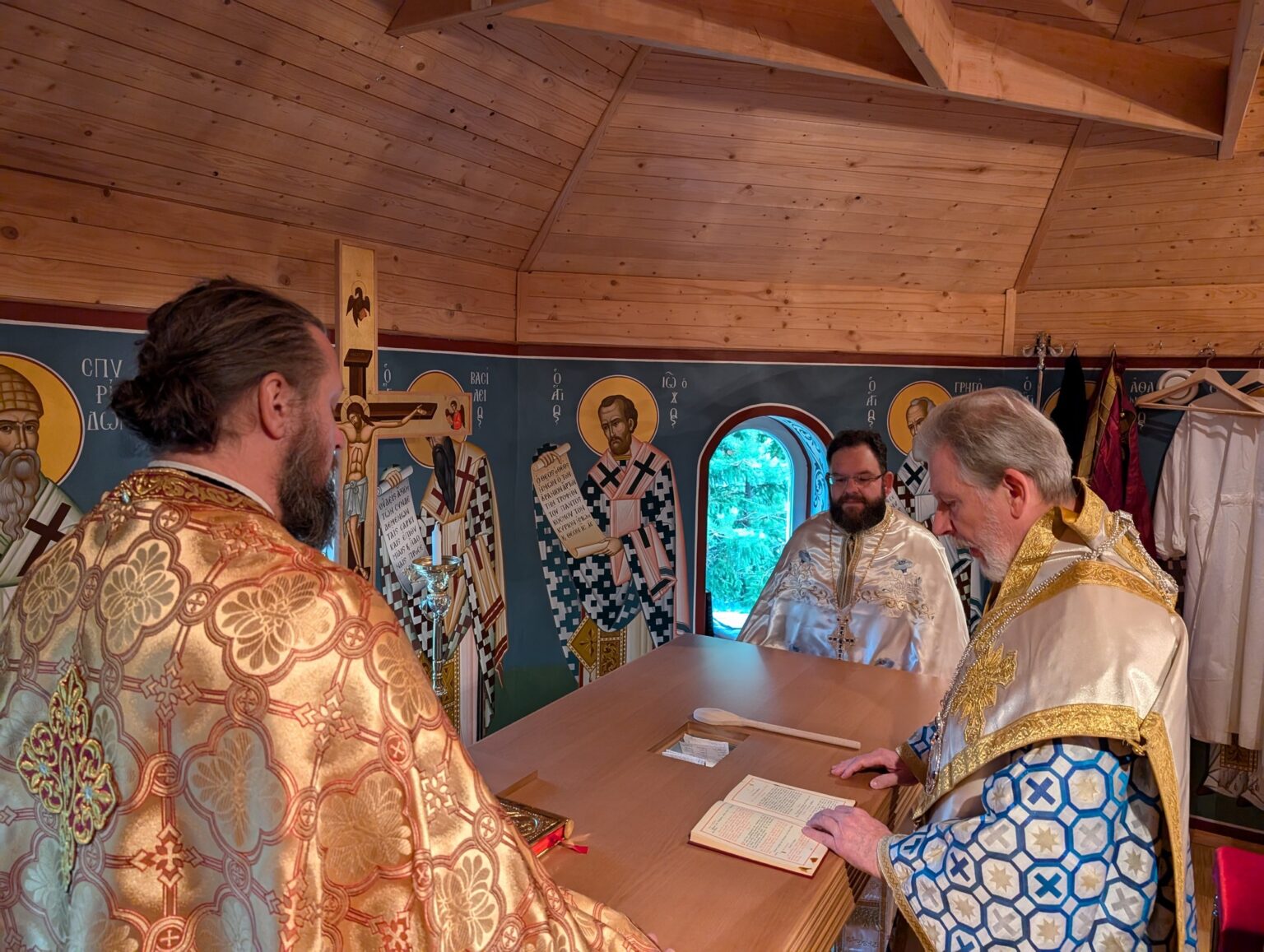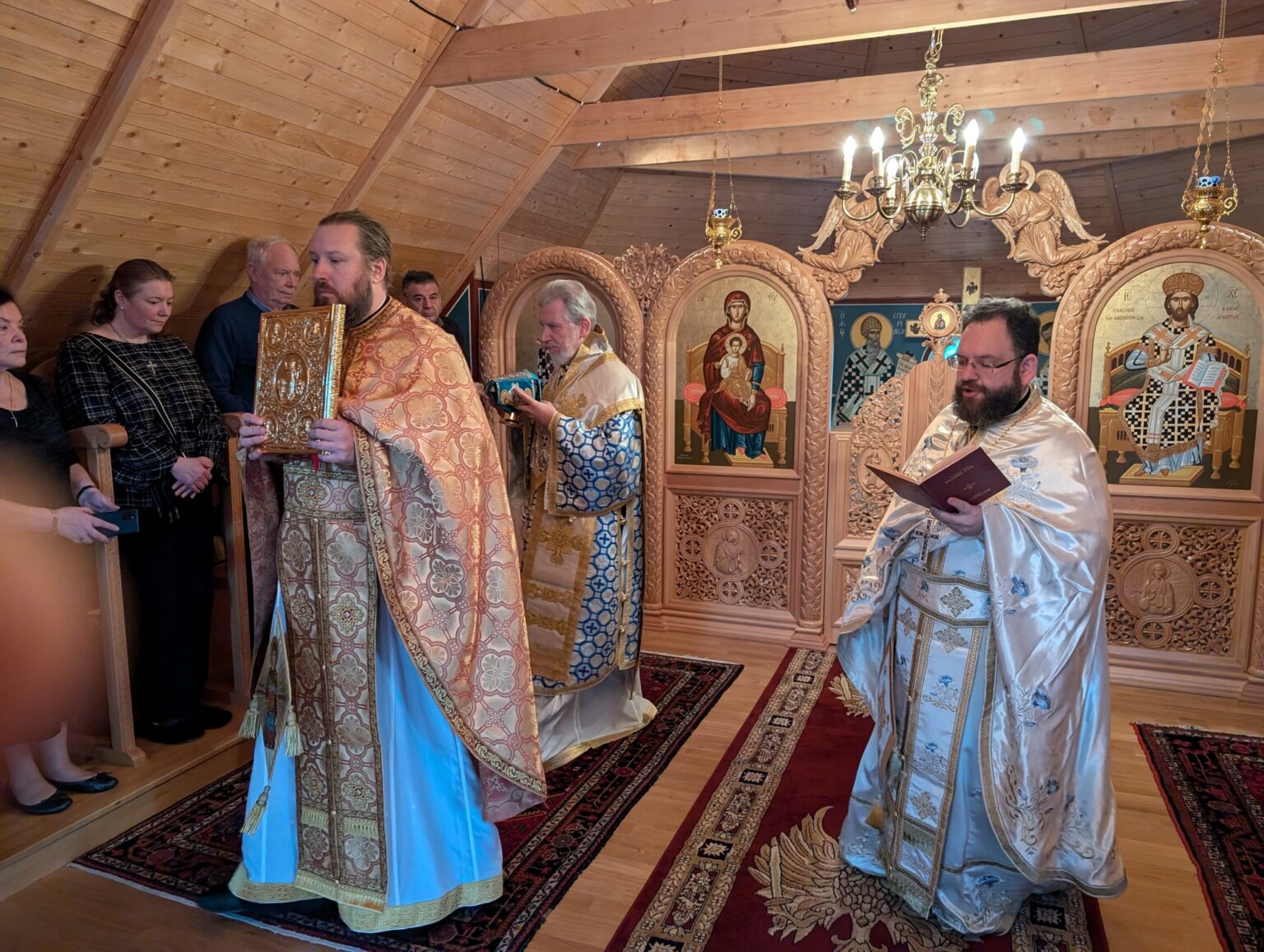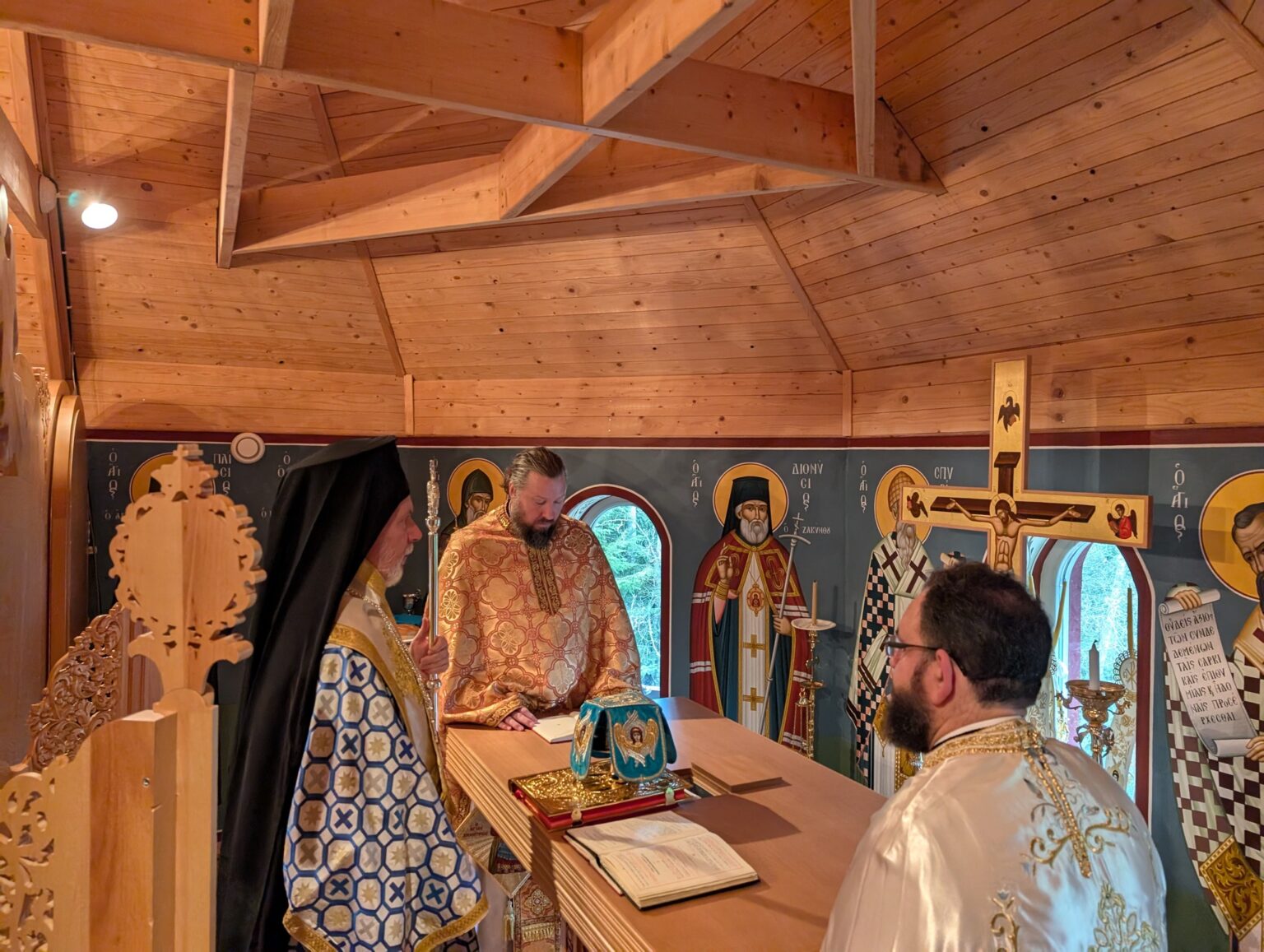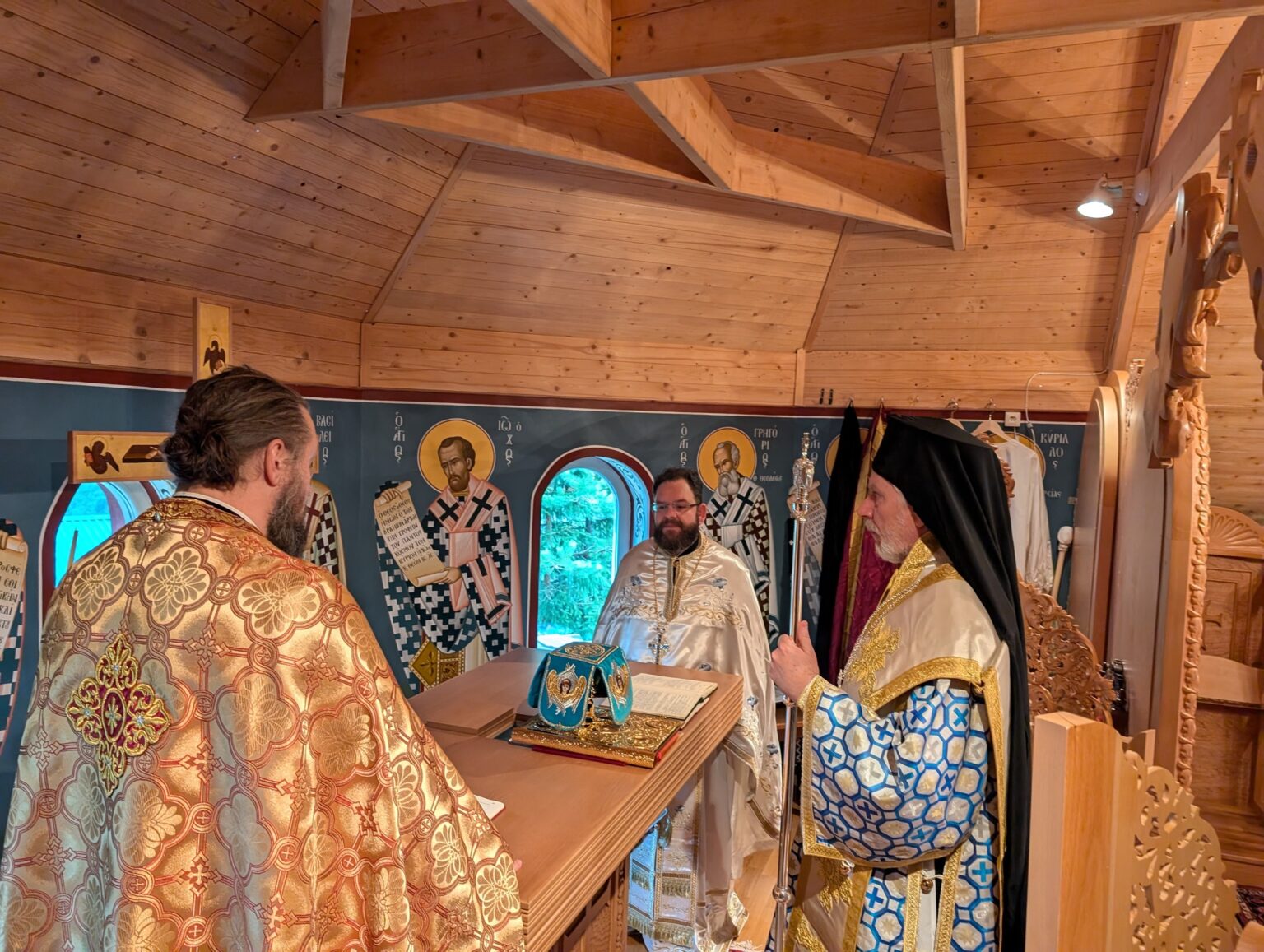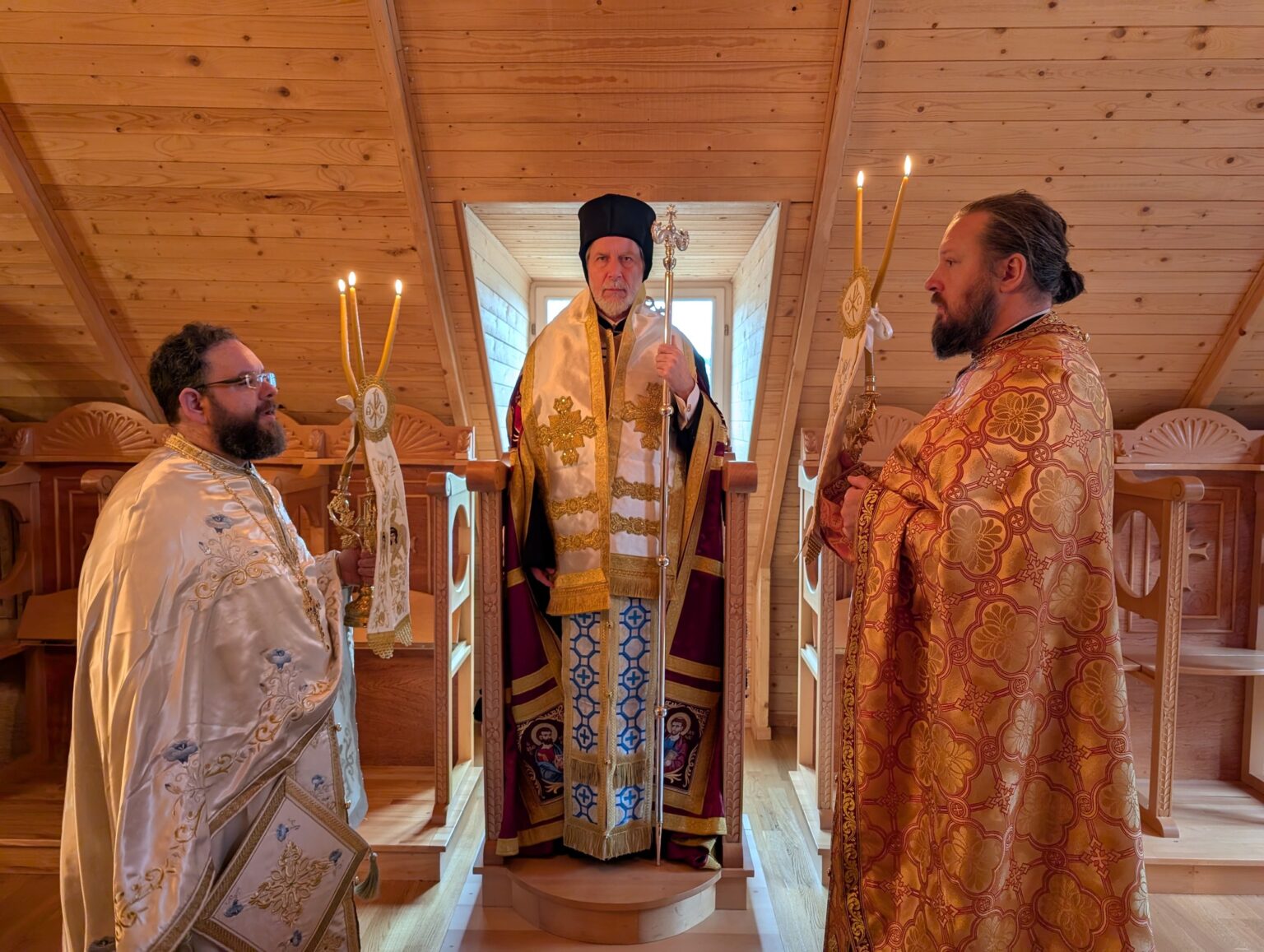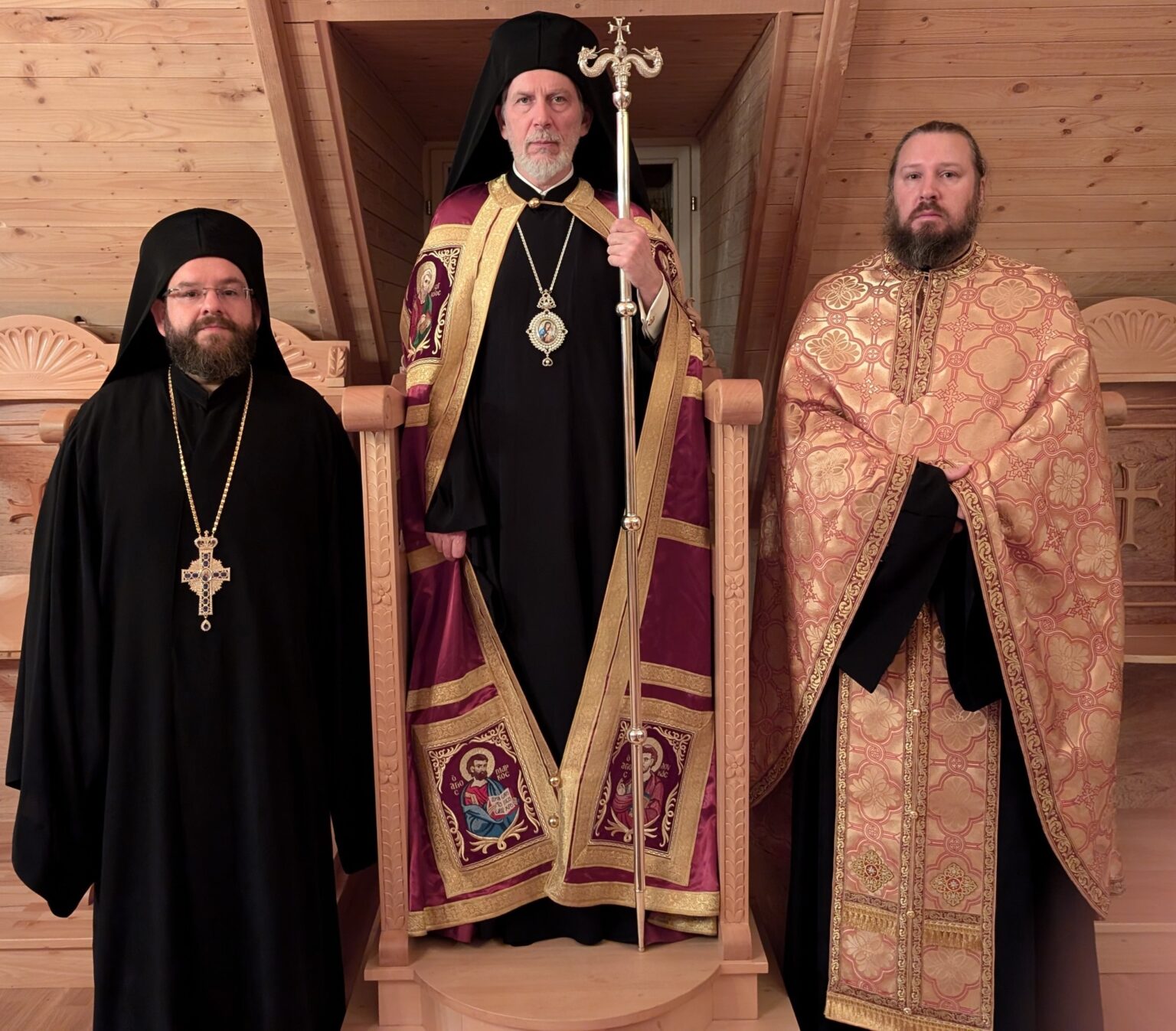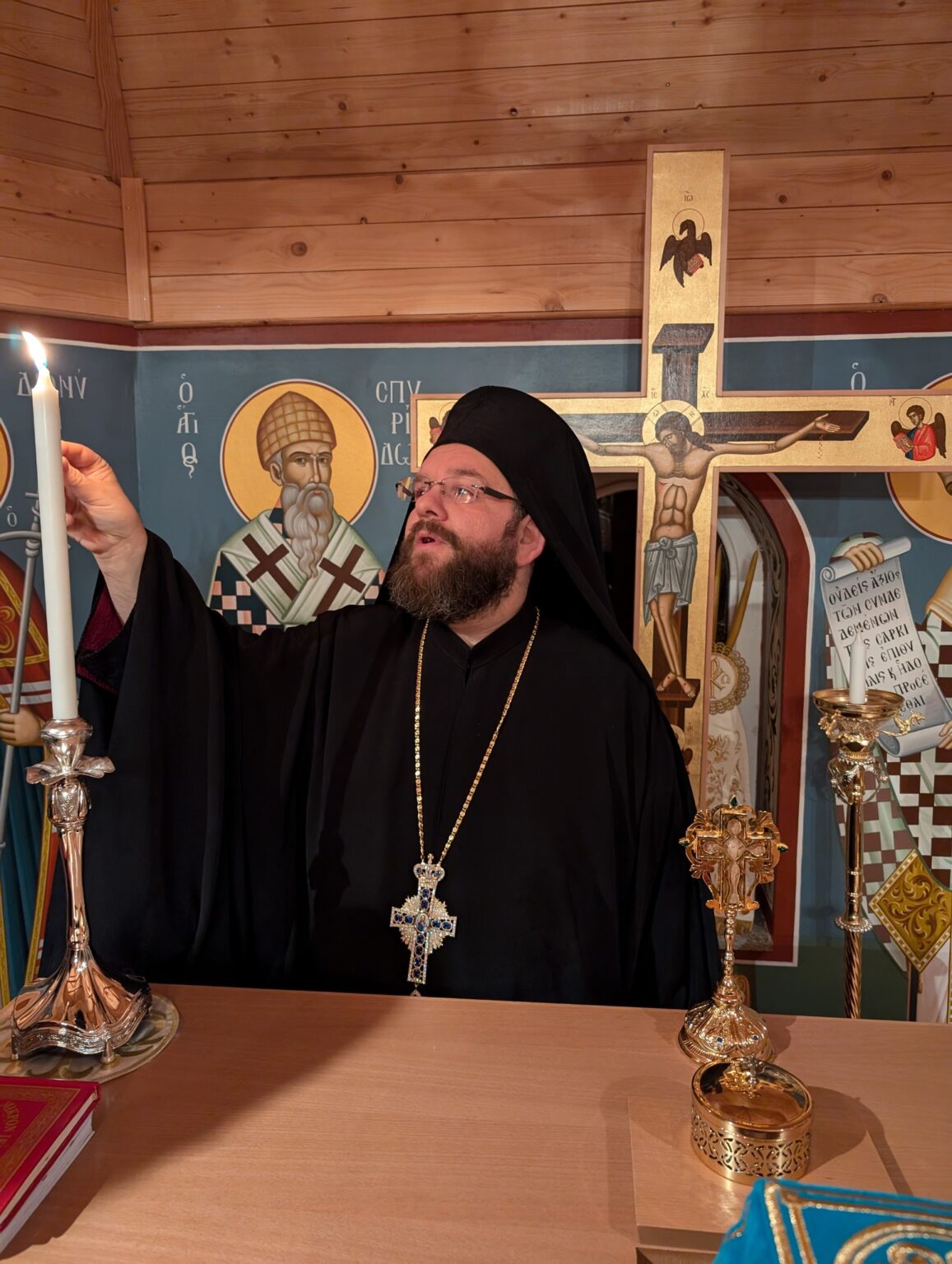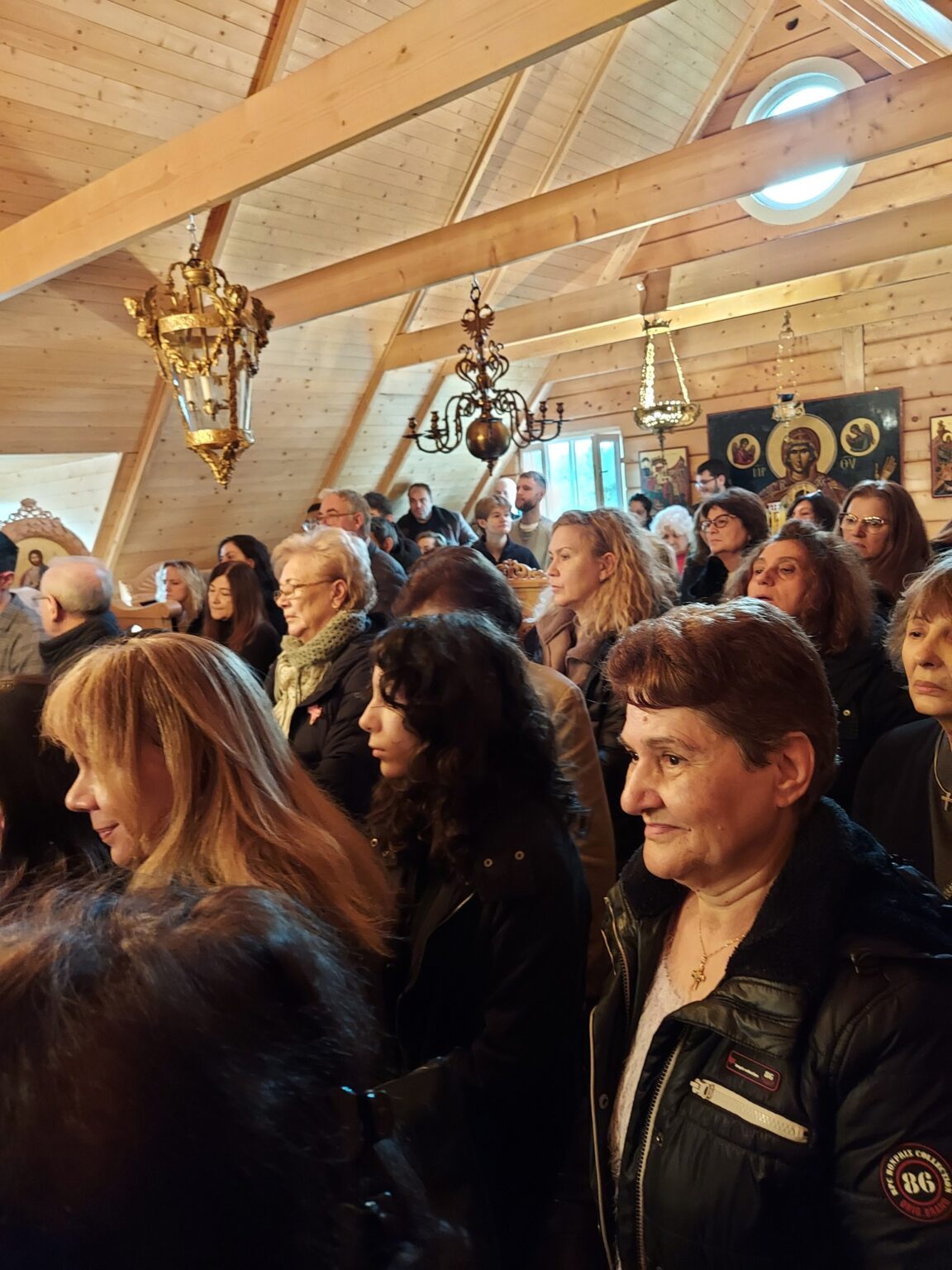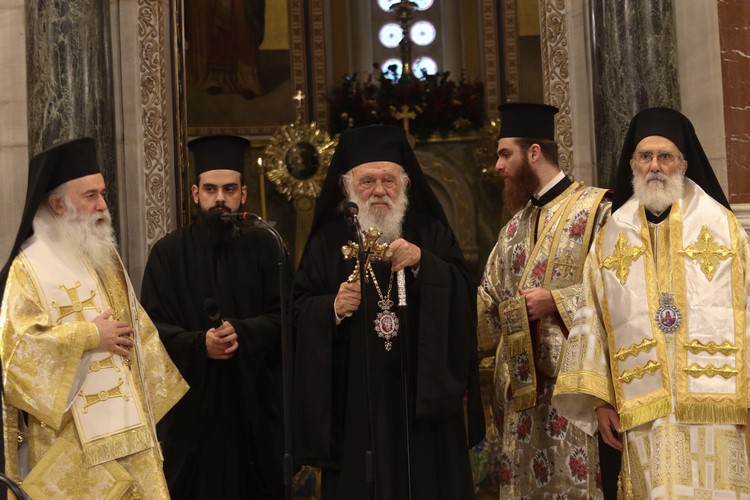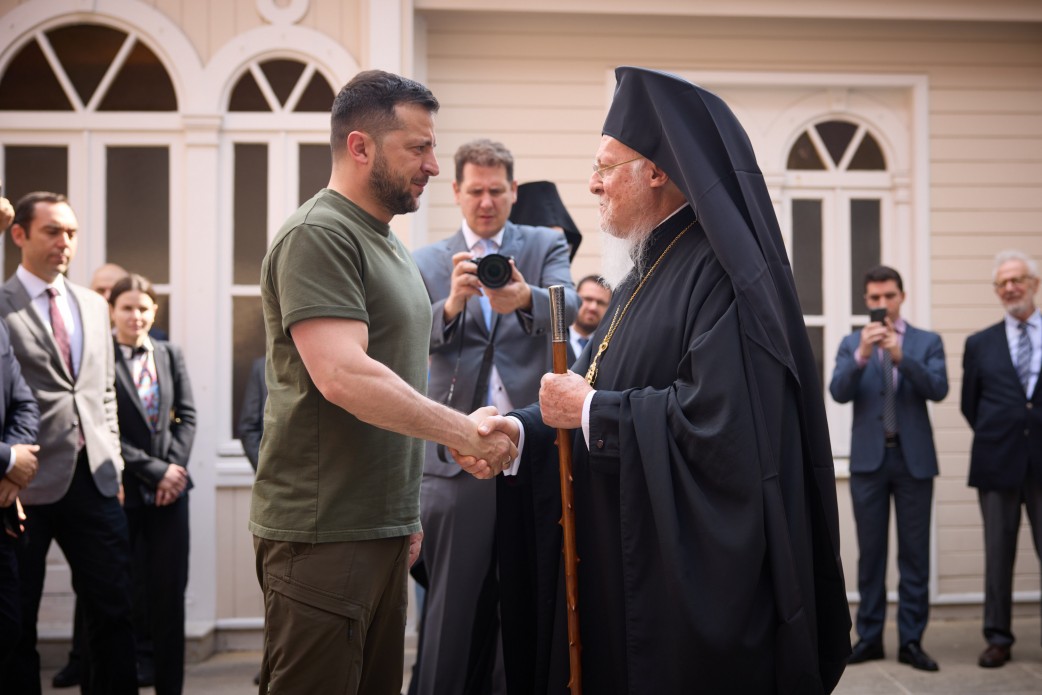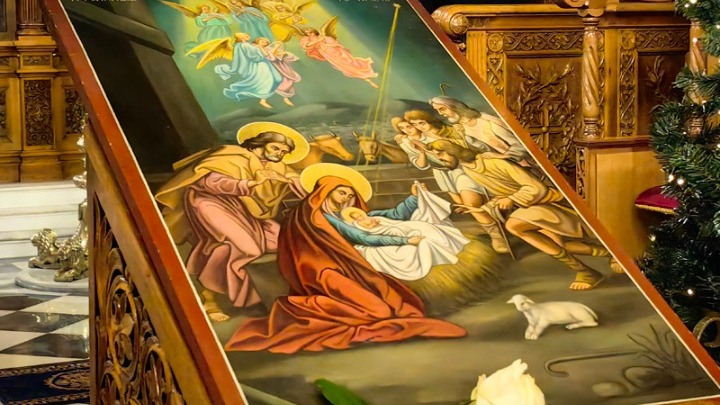Consecration of the Chapel of the Saint Nicholas Hermitage in Rättvik, Sweden
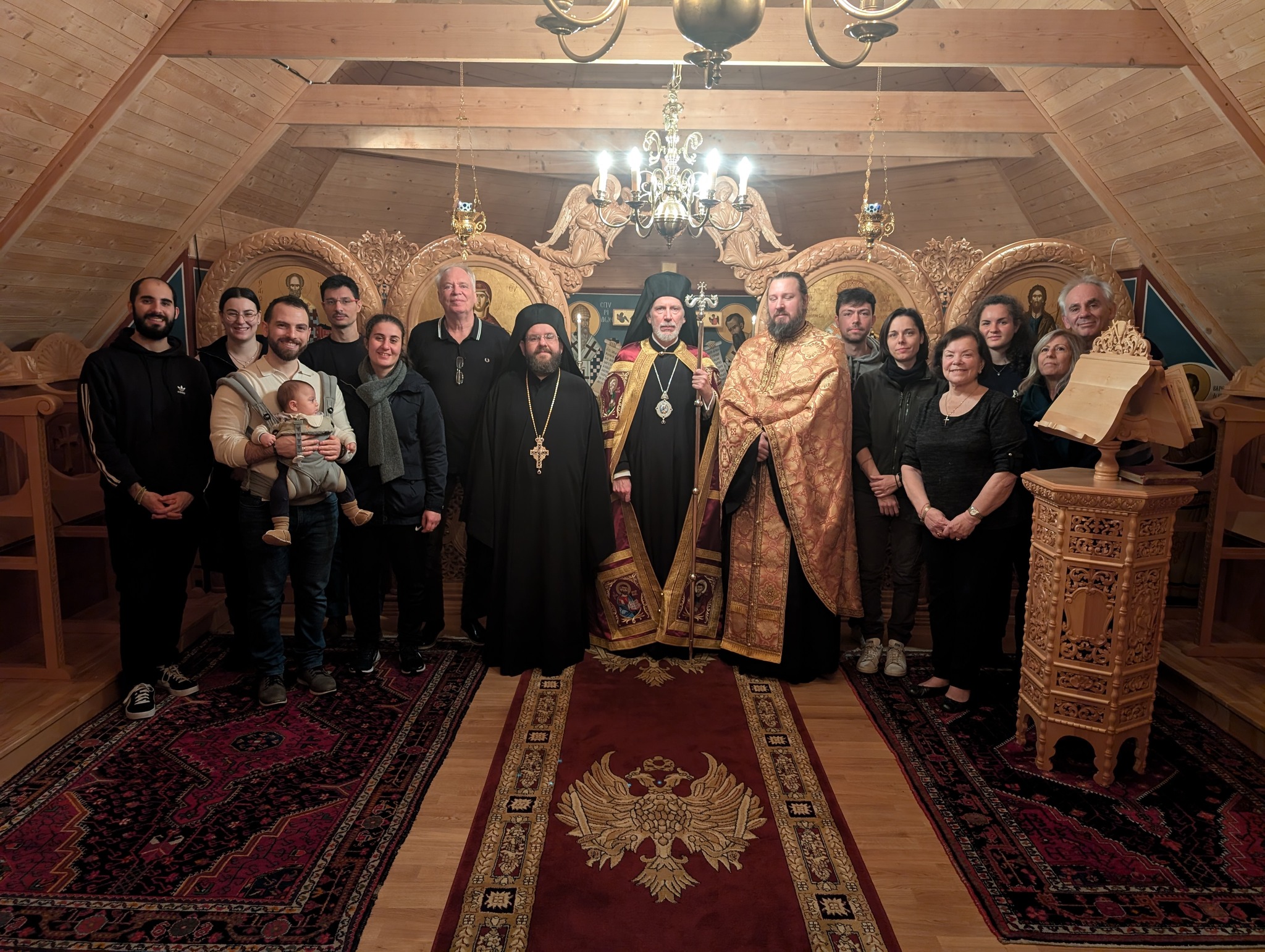

Over the weekend of November 8-10, 2024, the Holy Metropolis of Sweden celebrated the consecration of the chapel named after St. Nicholas the Wonderworker, Archbishop of Myra of Lycia, located within the Hermitage established by the ever-memorable Archimandrite Eusebios Vittis.
On the Friday afternoon, 8 November 2024, His Eminence Metropolitan Cleopas of Sweden and All Scandinavia presided in chorostasia at the Vespers of the dedication, aided by the Very Rev. Archimandrite Dr. Bartholomew Iatridis, Parish Priest of the St. George Cathedral in Stockholm, and the Rev. Economos George Arvanitidis, Parish Priest of the newly established parish of Saints Demetrios and Nestor in Örebro, Sweden. Prior to the Vespers, in keeping with ecclesiastical tradition, the Metropolitan brought the relics in a silver reliquary and placed them inside a holy receptacle.
During the Vespers, the hymns in honour of Saint Nectarios of Pentapolis, the dedication ceremony, and Saint Nicholas – after whom the chapel was named – were chanted by members of the Byzantine choir of the St George Cathedral in Stockholm under the direction of Ms. Iliana Antoniou.
A reception was held after the service, courtesy of Mr. and Mrs. Benedict and Sultana Svedberg.
On Saturday morning, November 9, Metropolitan Cleopas, aided by the aforementioned clergymen, celebrated the Divine Liturgy at the Hermitage chapel, officiating its consecration according to the rites of the Eastern Orthodox Church.
Prior to the conclusion of the festal Divine Liturgy, which was attended by a multitude of faithful from various cities in Sweden and Norway, the Metropolitan conferred upon Rev. Arvanitidis the office of confessor, while the people responded to this paternal gesture exclaiming “Axios!” (He is worthy!)
A memorial service was also held for the ever-memorable Archimandrite Eusebios Vittis, as this November marks the fifteenth year anniversary of his passing, with Metropolitan Cleopas referring to the late Elder’s character, his devoted pastoral and missionary ministry, and his literary contribution.
In his sermon, Metropolitan Cleopas noted that: “The grace of the Holy Spirit and the memory of the revered and beloved Saint Nectarios, Metropolitan of Pentapolis in Libya and patron of Aegina, have brought us together in a place of special significance for the Holy Metropolis of Sweden, for all Scandinavia, and for those who were blessed to be spiritually connected with a revered Elder, the Founder and builder of this Hermitage, the ever-memorable Archimandrite Eusebios Vittis.
This sacred space was established in 1973, and after Elder Eusebios’ permanent relocation to Greece in 1980, his passing in 2009, and its maintenance by the “Orthodox Brotherhood of Saint Nicholas,” it remained empty after its total destruction in a fire back in October 2010, until it was conveyed to the Holy Metropolis of Sweden, along with its surrounding facilities, on November 9, 2014, exactly ten years ago.
Three dates are milestones for today’s inauguration: 1) fifteen years since the passing of Elder Eusebios, 2) ten years since the transfer of the Hermitage to the ownership of the Holy Metropolis, and 3) fifty years since Elder Eusebios’ congratulatory letter to the late Metropolitan Paul, former Metropolitan of Amaseia, in which he mentioned, among other things, the following: ‘I deeply desire communion with You and, indeed, Your Eminence’s heartfelt blessing to support me in my difficult journey.
Furthermore, I indicate that the humble hermitage of Saint Nicholas, of which I consider myself an unworthy steward, is at Your Holiness’s full disposal.
You may henceforth consider it to be a place that is fully your own, where you will have every comfort to rest whenever, tired from the journey, you feel the need for solitude in a secluded place.
You will find in it all the devotion and genuineness of love that the undersigned’s poverty possesses.
It will be the greatest happiness for me if Your Eminence should see fit to dedicate the chapel of Saint Nicholas, which constitutes the spiritual hearth of this humble place.
Without the chapel, the hermitage would be entirely empty, utterly cold and dead.’
Today, the chapel of Saint Nicholas, renovated and equipped, reminds us that on December 6, 2015, its opening was celebrated by my Humility.
We were granted this great joy, as noted in a congratulatory letter by His All-Holiness Ecumenical Patriarch Bartholomew: ‘And now, with the passage of many decades, Father Eusebios enjoys in heaven the fruits of his labors, seeing the Hermitage in which he lived ascetically and in godliness, now transferred to the Holy Metropolis of Sweden and All Scandinavia, and renovated, so as to serve as a point of spiritual reference and a ladder of ascent to spiritual levels.’
The consecration of churches has its roots in the Old Testament and extends to Christian churches, featuring a completely different meaning and ceremony. In a purely allegorical manner, reference is made to consecrations that the Prophets Isaiah and Jeremiah mention, as well as to the dedication of the ‘Tabernacle of Witness,’ the kingdom of David, and Solomon’s Temple in Jerusalem.
Also, our Lord visited the Temple of Jerusalem during the Feast of Dedication, as recounted by St. John the Evangelist (Gregory the Theologian, “Oration XLIV,” PG 36, 608B).
The church, as the preeminent place of prayer, symbolizes the entire world, both intelligible and sensory. Within the church, the mystical relationship between God and humanity unfolds, on the one hand through the arrival of the latter and their need for prayer, and on the other, through the presence of God, Who as omnipresent, fills the church with Divine Grace!
Let us not forget that the Temple of Jerusalem during the Old Testament era symbolized the visible sign of God’s presence there. However, it serves as a temporary point of reference, which in the New Testament will be replaced by another sign, the Body of Christ, namely the Church.
In the four Gospels, Jesus had mentioned before His Passion to His disciples that He Himself and His Body constitute the temple of God.
Jesus’ reference to the demolition and reconstruction of the Temple of Jerusalem in three days does not pertain to the physical construction of the historical monument but rather to the Lord’s Resurrection on the third day, indicating His Body as the temple.
The resurrected Body of Jesus is the visible sign and the spiritual sustenance of the members of the Christian Church, and it constitutes the center of the mystery of the Divine Eucharist.
Christ, who is the preeminent temple of God, entering to dwell within the human body through Holy Communion, transforms the faithful into a temple of God. According to the teachings of the Church Fathers, the Theotokos and the saints are often described as temples of God.
The practice and description of the consecration of Christian churches have been significantly influenced by the description of the manner in which Solomon’s Temple was dedicated, as detailed in the narrative of the Old Testament (1 Kings 8:1).
My beloved brethren, we could speak for hours about the significance of the dedication of a church. Let us hold onto this: from this day forward, an Angel of the Lord will guard the Holy Altar, and we, when we approach and celebrate the bloodless sacrifice, will be transformed into a temple of the Holy Spirit, Who dwels within us.
Your Bishop’s concluding remark in his report for the year 2015 to the Ecumenical Patriarch remains my humble wish and prayer: ‘Please pray that this Hermitage may serve as a focal point attracting Christians and non-Christians alike, and may it become a spiritual center of prayer, asceticism, and spiritual contemplation for our Orthodox Christian brethren living in the regions under the spiritual jurisdiction of this Holy Metropolis.
Please pray also that the Lord our God may guide to this blessed place of asceticism pure souls, inspired by Divine zeal, a spirit of self-denial, obedience, and deep piety, who will in turn inspire and support those seeking assistance and spiritual guidance.’
I warmly thank my beloved Brothers, the Very Rev. Archimandrite Bartholomew Iatridis and Rev. Economos George Arvanitidis, for their kindness in accompanying me to the Hermitage and participating in the consecration of its chapel, Mrs. Fotini Batsela and Tania Svedberg, for the hospitality they extended to all of us, and the youth members of the St. George Cathedral in Stockholm for chanting the hymns at today’s worship service.
Finally, I express my deepest gratitude to His Excellency Metropolitan Agathangelos of Fanarion, Director General of the Church of Greece’s missionary arm Apostoliki Diakonia, for providing a) all the necessary items for the cosecration, b) the copies of the icon of Saint Nicholas, and c) the gracious holy relics of Saints Barbara and Raphael, the venerable martyr Agathangelos of Esphigmenou, and Agathangelos the martyr.”
Following this, a meal was served in the Hermitage’s reception area, overseen by Mrs. Soultana Svedberg, with dishes and sweets also contributed by Mrs. Fotini Batsela, Ioanna Skondra, Georgia Gitzia, and many of the faithful who brought various items.
May the blessings of Sts. Nicholas and Nectarios be abundant in the lives of all, and may the consecration of the Chapel serve as the beginning of a new chapter in the life of the Hermitage, through the revelation of persons who, with missionary zeal and self-sacrifice, will continue the work of the late Father Eusebios, whose soul will rejoice as he sees his wish for the consecration of the chapel of his Hermitage fulfilled fifty years later.
Source: Metropolis of Sweden
